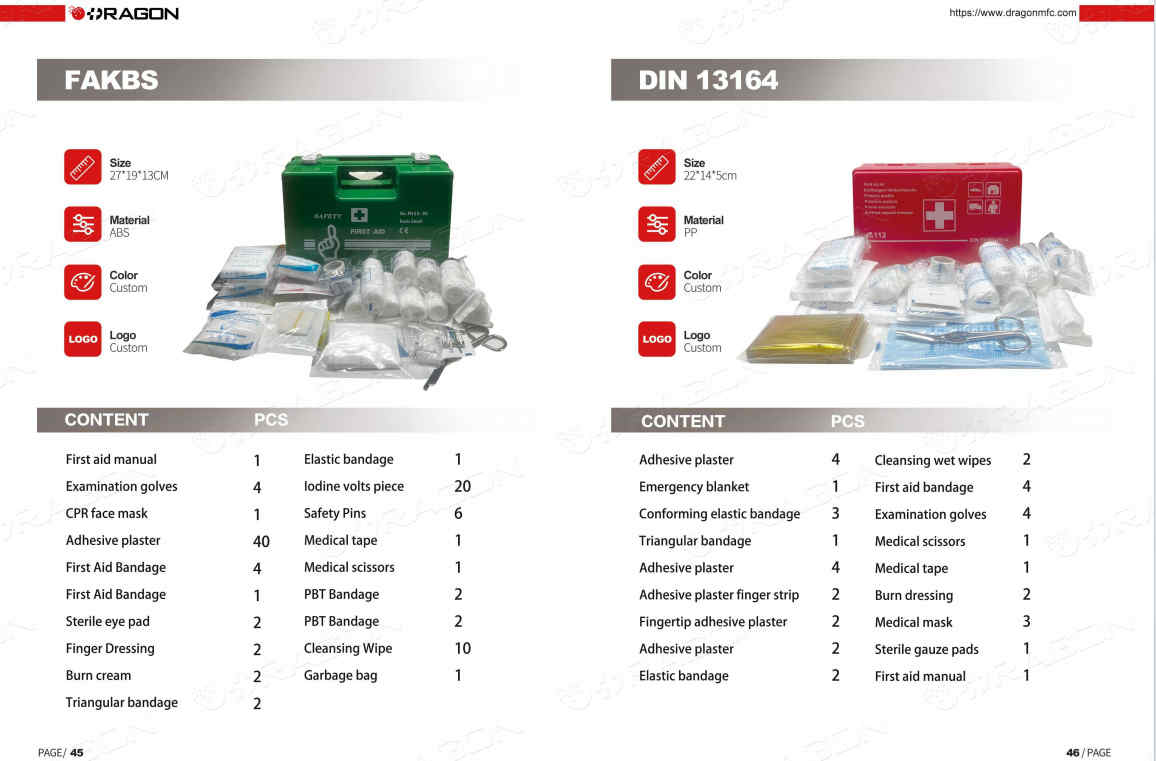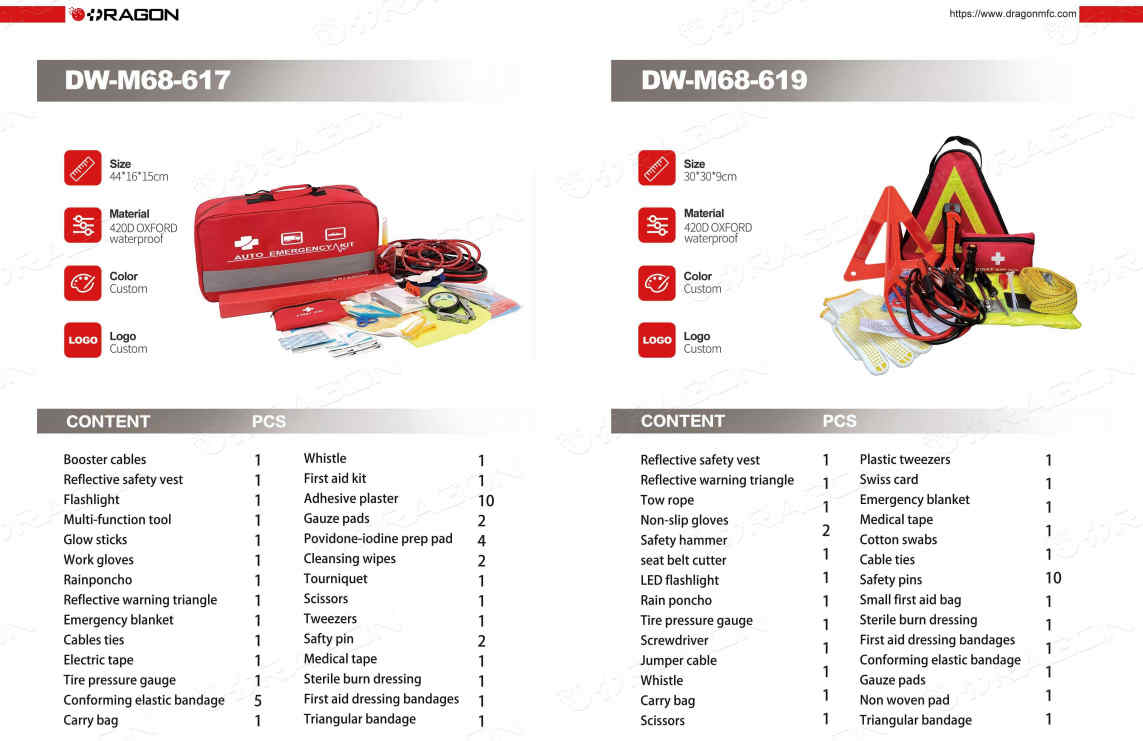Views: 5 Author: Site Editor Publish Time: 2025-06-23 Origin: Site











First aid kits need to be equipped with a wide range of essential first aid supplies, and a well-stocked first aid kit can help you respond effectively to unforeseen circumstances. Depending on the environment, a first aid kit will also come with a different program of first aid supplies.
In an emergency, you may need to act quickly, so it's important to familiarize yourself with your first aid kit and know how to respond to different injuries. A well-rounded first aid kit should contain common first aid supplies such as sterile gauze, bandages, alcohol, scissors, gloves, tourniquets, and other supplies.

First aid guide

Tourniquet: compression of the limb by strapping to control hemorrhage in case of severe bleeding of the casualty (for arm or leg).
Israeli Bandage: Multi-purpose first aid bandage to stop bleeding, dress and immobilize.
Elastic Bandage: Bandage is used to immobilize and support sprains or to dress swollen areas.
Compressed Bandage: Bandage in a compressed package, small and easy to carry.
Triangular Bandage: Multi-purpose, used for bandaging, immobilization or as an arm sleeve.

Hemostatic gauze: Hemostatic gauze helps the casualty to stop bleeding quickly.
Sterile gauze pad: covers the wound, absorbs exudate and protects the wound from infection.
Wound dressing: covers and protects the wound to prevent infection.
Medical tape: Fixation bandages and dressings.
PVC gloves: hand protection to avoid spreading infection.
Chest seal: for open chest wounds to prevent gas from entering the chest cavity.
Band aid: Emergency treatment of small wounds.
Alcohol prep pad: can be used to clean wounds or hands.
Sting relief prep pad: For relief of pain and discomfort from insect stings.
Fever cooling patch: Reduces body temperature and relieves body heat.
CPR Face Mask: Isolation mask for CPR.
Nasopharyngeal Airway: Helps keep the airway open and the patient breathing.
Decompression Needle: Responds to serious chest situations such as emergency pneumothorax.

Safety pins: to secure bandages or clothing.
Scissor: for cutting bandages, tapes or casualty clothing.
Tweezer: to remove foreign objects or debris.
Raincoat: Emergency outdoor rain and wind protection.
Rescue whistle: Rescue calls to attract the attention of rescuers.
Reflection warning: Night or long-range location warning.
Safety hammer: Emergency window breaking or emergency response.
Mercury thermometers: Measure body temperature at any time.
Hand-cranked flashlight: emergency lighting without batteries.
Saber card: integrated scissors, blades and other multi-tools.
Emergency blanket: Helps prevent body heat loss and maintain body temperature.
Always check your kit regularly to make sure that first aid supplies are within their due date and are working properly. Mark the date your kit was last used. Store your first aid kit in a place where it is easily accessible and out of reach for young children. Make sure that children old enough to understand the purpose of the kits know where they are stored.
A first aid kit is an important preparation for emergencies. Basic first aid knowledge and skills, combined with a well-structured first aid kit, will enable you to cope in times of crisis and protect the preciousness of life.
We'll try our best to become one of most reliance cooperation suppliers in emergency rescue and safety protection field, including spine board with head immobilizer, folding spine board, medical carts for sale, portable iv pole and electric dolly for stairs.
Subscribe to our email list and stay upto date with all your latest updates